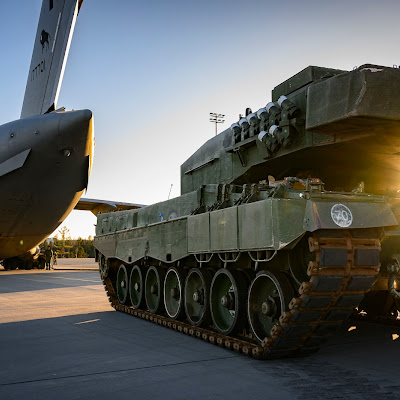By Stijn Mitzer and Joost Oliemans
Transnistria, officially known as the Pridnestrovian Moldavian Republic (PMR), is a breakaway state in Eastern Europe that has remained in the shadows ever since its self-proclaimed independence as a Soviet republic in 1990 and subsequent violent breakaway from Moldova in 1992. Despite having ended armed conflict that same year, the situation in Transnistria remains extremely complicated, with the the breakaway state wishing to join Russia (which maintains a local peacekeeping mission) while continuing to remain heavily reliant on Moldova for exporting the limited produce its economy outputs. Nevertheless, Transnistria functions as a de-facto state with its own military and even air arm.
A remarkable development has been Transnistria's very own arms industry. This industry was
highly active during the Moldovan Civil War, producing a variety of DIY
weaponry including armoured personnel carriers (APCs) and multiple rocket launchers (MRLs) for use against the Moldovan Army. After the cessation of
hostilities, the arms industry would play a vital role in upholding the
operational status of the Transnistria's army, which has so far remained unable
to replace its dated inventory of Soviet weaponry.
Nonetheless, a great deal has been done internally to remedy this situation, and it wasn't before long when Transnistria began producing its own armoured fighting vehicles to at least supplement the hodgepodge of vehicles currently available to its armed forces. While we already covered the BTRG-127 'Bumblebee' APC and Pribor-2 MRL in previous articles, today's vehicle is a welcome addition to this series by the virtue of its rarity and endearing looks.
Based on the elusive Soviet GT-MU multipurpose armoured vehicle, the 'Little Tank Buster That Could' combines the small size and agility of its host platform with a 73mm SPG-9 recoilless rifle (RCL). This in turn creates a platform ideally suited for fire support missions against vehicles, fortified structures and enemy troop concentrations and for laying ambushes against any unsuspecting foes. At least three of these vehicles participated in live-firing exercises along with T-64BV tanks, anti-tank guns and heavy mortars in November 2018, confirming their operational
status.
The GT-MU's appearance in the world today is so rare that only few know about the existence of this elusive vehicle. It nonetheless served as the base platform for several types of highly specialized variants, including the SPR-1 mobile jammer. The SPR-1 is tasked with disabling mortar and artillery shells by jamming their proximity fuses, and entered service with the Soviet Union, Czechoslovakia, Hungary, Syria and East Germany in small quantities, with the latter acquiring just two. Well protected against small arms fire and shrapnel, the vehicle can also be notoriously difficult to spot when outfitted with camouflage netting.
How Transnistria came in the possession of its GT-MUs is a result of the composition of the Soviet 14th Army stationed in this part of Eastern Europe. When the Soviet Union dissolved, much of the personnel and their associated weaponry which once made up its military became subordinate to the newly established states they were located in. When Transnistria took over most of the weapon storage depots on the territory it controlled, it inherited large amounts of specialised vehicles while being left without any significant numbers of infantry fighting vehicles or (self-propelled) artillery.
In this way the Transnistrian Army suddenly became the owner of a large fleet of GT-MU multipurpose armoured vehicles with no apparent use for them. However, designed as a versatile platform from the onset, Transnistria set on to convert several vehicles to the role of command and observation vehicle for artillery and MRL units while others were employed as artillery tractors and now as improvised tank busters.
While the resulting vehicle is arguably less innovative than some of the other DIY projects churned out by Transnistria's defence industry, the armament of the tank buster is more than adequate to deal with the armour of the only plausible adversary Transnistria might find itself at odds with. As Moldova retired its tanks from active service years ago, the only true armour it can muster is the lightly armoured BMD-1 IFV, whose armour protection is insufficient to stop the 73mm HEAT projectiles of the SPG-9.
The 73mm SPG-9 installed on the hull top of the 'Little Tank Buster That Could' is operated by a single crewmember using one of two hatches on either side of the RCL, from where he can also load the SPG-9. In practice, a dedicated loader operating out of the infantry compartment would be required in order to sustain a reasonable fire rate. The infantry compartment itself has likely been modified to house a substantial amount of ammunition, ensuring the vehicle won't be left without a fighting chance on the battlefield.
Although certainly less capable than contemporary vehicles in the same class, the 'Little Tank Buster That Could' is nonetheless an interesting
attempt at increasing Transnistria's firepower at little to no cost, a necessary measure for the self-proclaimed republic to maintain its status as a breakaway state.
Recommended Articles
A Forgotten Army: Transnistria's BTRG-127 'Bumblebee' APCs
A Forgotten Army: Transnistria unveils new type of multiple rocket launcher

.png)









